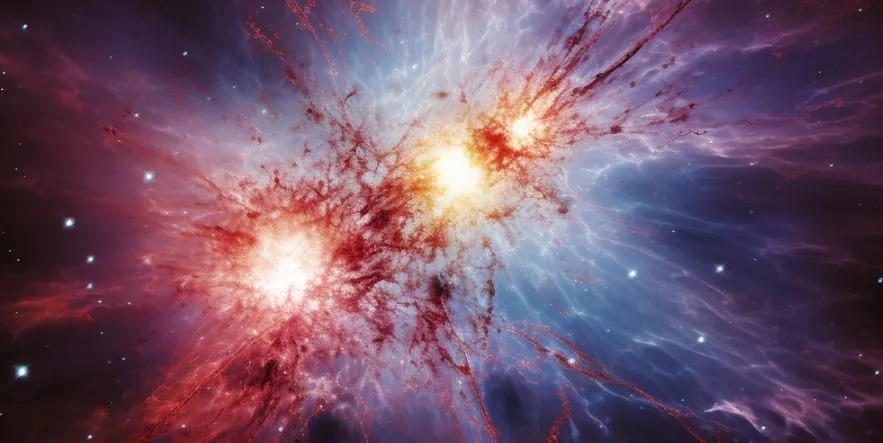Exceptionally bright gamma-ray burst offers new data on the formation of life-essential elements

Through a collaborative effort involving multiple ground and space-based telescopes, including the James Webb Space Telescope, scientists observed an exceptionally bright gamma-ray burst, GRB 230307A. This gamma-ray burst, caused by a neutron star merger, has been instrumental in advancing the understanding of nucleosynthesis, revealing the formation of rare chemical elements essential for life.
Through a combination of ground and space-based telescopes, including NASA’s James Webb Space Telescope, Fermi Gamma-ray Space Telescope, and Neil Gehrels Swift Observatory, scientists have observed GRB 230307A, an exceptionally bright gamma-ray burst. This event has significant implications for our understanding of nucleosynthesis—the process by which elements are formed—as it revealed the formation of rare chemical elements essential for life.
The gamma-ray burst was instigated by the merger of two neutron stars, celestial bodies that had been spiraling toward each other for several billion years. This event occurred at a distance of approximately 120 000 light-years from their home galaxy. The burst lasted for 200 seconds, categorizing it as a long-duration gamma-ray burst, a classification that challenges existing theories since neutron star mergers more commonly result in short gamma-ray bursts of less than two seconds.
Spectroscopic data from the observation revealed an emission line at 2.15 microns, which scientists interpret as the presence of the element tellurium (atomic mass A=130). The source also emitted most of its light in the mid-infrared (mid-IR) range due to the production of lanthanides, a group of 15 metallic chemical elements in the periodic table. This discovery marks the second instance where individual heavy elements have been detected using spectroscopic observations after a neutron star merger.
An international research team, including experts from the University of Birmingham, contributed to the study. Their findings have provided pivotal insights into the conditions required for the synthesis of very heavy elements. The radioactive decay of these newly formed elements powered the kilonova detected as the gamma-ray burst faded.
While the presence of elements such as iodine and thorium, which are necessary for sustaining life on Earth, was not directly observed in this event, they are believed to be among the materials ejected by the explosion. This observation opens new avenues for further research into the roles that neutron star mergers play in the elemental composition of the Universe.
The discovery has far-reaching implications for multiple fields of astrophysics, including the study of high-frequency gravitational waves, heavy element nucleosynthesis, and the properties and behaviors of gamma-ray bursts. The research team is now focusing on investigating more of these long-lived mergers to better understand the driving factors behind them and to explore the possibility of the formation of even heavier elements.
References:
1 Massive space explosion observed creating elements needed for life – University of Birmingham – October 24, 2023
2 Heavy element production in a compact object merger observed by JWST – Levan, A., Gompertz, B.P., Salafia, O.S. et al. – Nature – October 25, 2023 – https://doi.org/10.1038/s41586-023-06759-1
Featured image credit: The Watchers

Commenting rules and guidelines
We value the thoughts and opinions of our readers and welcome healthy discussions on our website. In order to maintain a respectful and positive community, we ask that all commenters follow these rules.